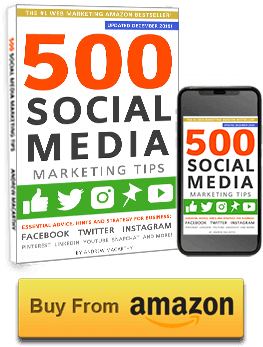NEW YouTube Cards: Everything You Need to Know - Setup, Optimization, and Best Practices
/Do you use YouTube annotations in your videos? YouTube cards are their evolution, and the site hopes they will eventually replace annotations altogether. In this post, I'll tell you what they are, show you how to set them up, and give you some tips and best practices to make the most of them. Let's get started!
What are YouTube cards?
YouTube cards are a way to give video creators more flexibility with the information shared through annotations and to have that information seen on both desktop and mobile devices.
At present, there are six types of card available:
- Merchandise (to advertise for sale)
- Fundraising (to promote a charitable cause on designated websites)
- Video (to promote another video on YouTube)
- Playlist (to link to a YouTube playlist)
- Associated Website (to link to your channel's associated website, e.g. your blog)
- Fan Funding (crowd funding link, letting fans show appreciation for your work through a monetary contribution).
What do YouTube cards look like and how do they work?
When a card has been added to a video, viewers will be notified of it via a call-to-action that appears on top of the player. This teaser will appear for a few seconds at a designated time, then disappear other than the "i" icon. Cards are added on a per-video basis, and up to five cards can be applied to any one video. In the above example, a Merchandise card has been added to advertise a t-shirt for sale.
If a user clicks on the card, it will expand to show further details - including images, links, and text descriptions.
How to setup YouTube cards
To setup a card, visit your Video Manager, click Edit on the video that you want to add a card (or cards) to, then choose the Cards option in the top tab bar.
In the cards tab, click Add Card, then choose which type of card you want to create. Depending on your choice, the options for building it will be slightly different. In this example, I am demonstrating an associated website card.
Above is the setup process for the associated website card. I fill in a title (50 characters max.), a call to action (25 characters max.), and upload an image to represent my website. See the arrows on top of the image? YouTube will automatically grab stills from different portions of your associated website, and give you thumbnail options that way, too.
When you save a card, it will appear in a list beside your video preview.
To choose when you want your card's teaser message to appear, click and drag the marker on the timeline.
Play the video in the editor for a preview of your card - and you're done!
YouTube card tips and best practices
- For the most benefit, YouTube cards should be used contextually, and be related to the video to which they are added. Use them to help add value to your videos, and to reach your business goals.
- Don't physically point to a card within a video, as it may appear differently on viewers' devices.
- If you do not add any teaser text to a card, the call-to-action text will be used instead.
- If using multiple cards in a video, space them out to give each one breathing space for viewers to digest.
- Check on the performance of your cards in YouTube Analytics. Set a benchmark and then experiment to see if you can improve their effectiveness.
Over to you
Will you be adding YouTube cards to your videos? What kind of things will you be using them for? Let me know in the comments below!
Andrew Macarthy is a social media consultant and the author of the #1 Amazon Web Marketing Bestseller, 500 Social Media Marketing Tips.
Buy 500 Social Media Marketing Tips
Amazon US: http://www.amazon.com/dp/B007L50HE6
Amazon UK: http://www.amazon.co.uk/dp/B007L50HE6
Follow Me:
http://www.facebook.com/500socialmediatips/
http://www.pinterest.com/andrewmacarthy
http://www.twitter.com/andrewmacarthy
http://www.youtube.com/500socialmediatips











